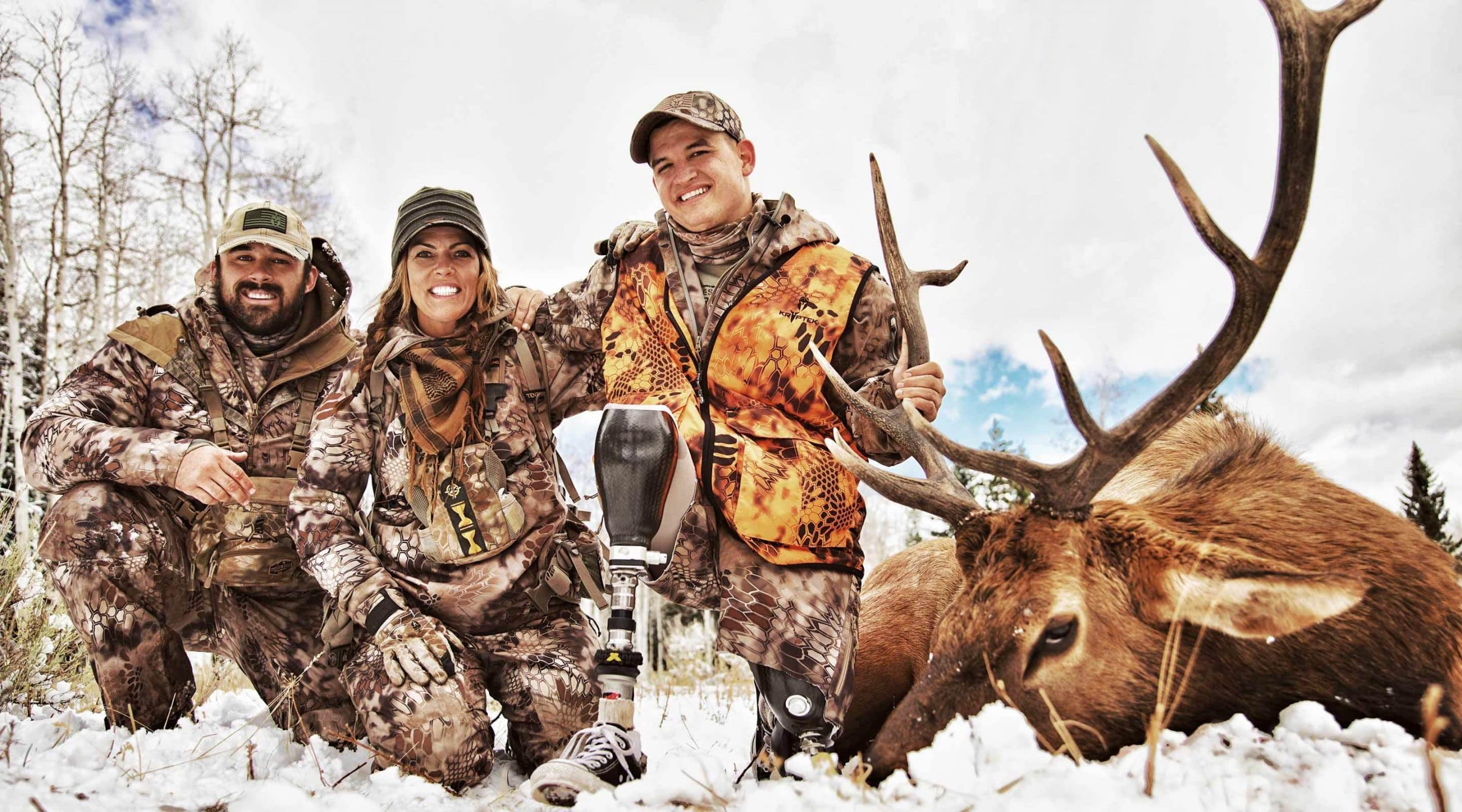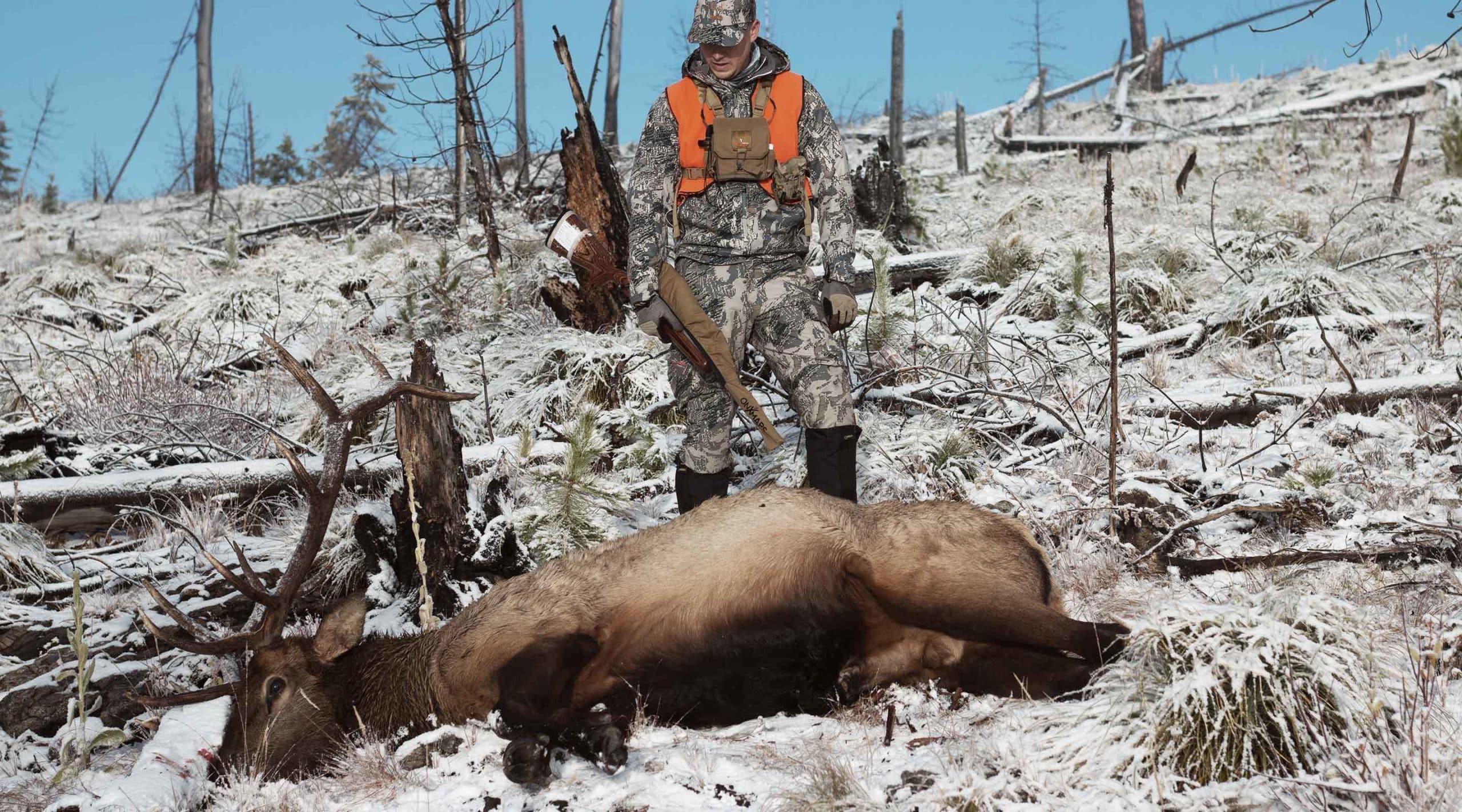The final weekend of archery elk season can seem futile. Frigid temperatures give way to snow, elk movement seems erratic and the peak of the rut is in the rearview mirror. It’s times like these I can’t wait to exchange the struggle of my bow for the confidence of my rifle.
Calling elk in the early season is the most exciting aspect of archery hunting, but onX ambassador and host of Skull Bound T.V., Jana Waller, says the late season is no time to put away your elk calls.
The Rut Doesn’t Come Only Once a Year
According to Waller, around four weeks after the peak of the rut, cow elk that did not get bred will go into a second estrus, reigniting the bugling and rut activity.
Waller said she has heard bulls bugle well into the second week of rifle season. Even that late in the season, she said the only reasonable thing to do was call back and gauge the bull’s interest.
She said bulls will often let out random bugles, which are great for locating. The bugles won’t be as regular as during the peak rut, but can still act as a beacon while you creep your way closer. Besides bugling, cow elk will communicate with each other year-round, so cow calling, especially if you have a cow tag, is a good strategy.
“I can think of an example of when we were hunting with double-amputee Navy SEAL Bo Reichenbach. It was the first week of rifle season here in Montana, and Bo had just spent a lot of energy crawling to the top of one of the canyons. We heard a bugle coming from deep inside a different canyon, and it gave us directions on where to hunt that evening. If you are very close to the herd, you can almost always hear cows communicating to one another,” Waller said.

Follow the Herd
If you happen upon a herd and set up to call, take cues from the herd on the intensity and frequency you should apply to your own calling. Bull elk are most likely beat up and hiding to recover from the month-long battle that is the rut, but odds are a bull will get right back to his loving mood if an amorous cow comes around.
“It really depends on how vocal the herd is. We have experienced bugling even a couple of weeks into the rifle season. If you’re hearing bulls bugle from a distance then it only makes sense to try and work over in his direction to see if he’s interested in checking out your cow call.”
Get a Participation Trophy
The idea of taking a trophy is appealing to many hunters, but if you’re in it for the meat and you aren’t married to taking a monster bull, you may have a much better chance at convincing a young bull you are a lonely cow.
The late, or second, rut is a time of desperation for young bulls. In her experience, Waller said the herd bulls are busy tending to their harems and will pay little to no attention to your calls. The smaller bulls, however, will still be longing for the company of a cow, and hitting them with some estrus calls may fire them up enough to bugle their way in.
According to Waller, “late-season, if you know where the herd is hanging, then a light cow call or two is going to be more effective than say a challenge bugle.”

Stop in the Name of Love
Jason Phelps of Phelps Game Calls is also a strong believer in the effectiveness of late season calling, and one of his favorite tactics is cow calling to calm a herd. Phelps noted that when he stalks the thick woods in the late rifle season, no matter how quiet he tries to be, he will often hear the crash of spooked elk ahead of him. If the wind is in his favor, however, a quick series of cow calls will often calm the herd down enough for him to get in range.
“By immediately using a cow call and a few soft mews, I let the herd know that I’m another elk. This typically will calm the herd and allows me a second chance to regroup and devise a new plan of attack.”
Give Them a Cold Call
Elk are herd animals and extremely social, so if Phelps is in an area with a ton of fresh sign, he may just sit in one spot and start cow calling without hearing from any other elk. This tactic can work in high-traffic areas with lots of hunting pressure
Phelps added that if you do set up for a cold calling session, be prepared. Phelps often finds elk to come in silently to these calls, and if you’re in thick timber, your opportunities will be fleeting.